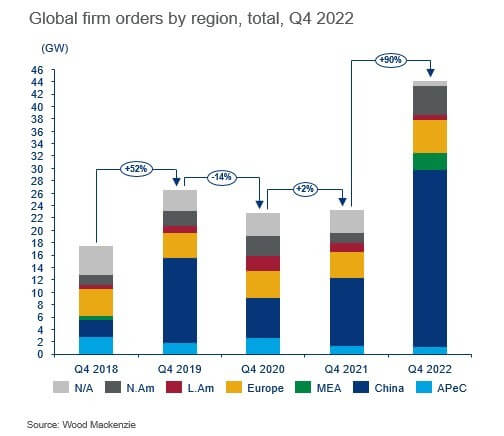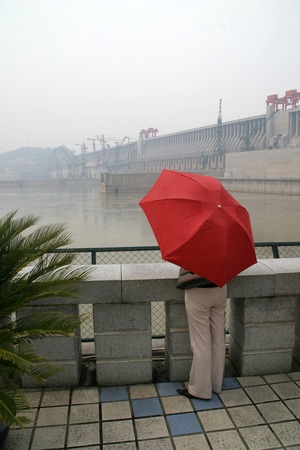News Release from windfair.net
Wind Industry Profile of
China as a driver of the energy transition
By 2030, the People's Republic of China aims to peak its carbon emissions and source 20 percent of its energy from non-fossil sources. The goal is then to become carbon neutral by 2060. The expansion of renewables has therefore been booming for several years. In the battery and solar sectors, European players have been quickly squeezed out of the market, and even the U.S. can only help itself with protective tariffs in order to compete with the overwhelming competition.
And there is no end in sight to the boom. By the end of May, according to China's state-run Xinghua news agency, installed wind power capacity had risen 12.7 percent year-on-year to about 380 million kilowatts, while that of solar power was about 450 million kilowatts, up 38.4 percent year-on-year. China's installed power generation capacity totaled 2.67 billion kilowatts during this period, a year-on-year increase of 10.3 percent.
It's no wonder that the global wind energy market alone will surpass the threshold of one terawatt (TW) of installed capacity by the end of 2023, as predicted by Wood Mackenzie's latest market outlook. "After needing more than 40 years to reach one TW of installations, the wind industry will reach the next TW of installations within the next eight years, a significant acceleration of growt," explains Luke Lewandowski, Wood Mackenzie Research Director.
The clear frontrunner: China. "The China wind power market will rebound strongly in 2023, with developers nearly doubling the amount of annual capacity YoY, on the back of a record year for new wind turbine orders in the country. Over the 10-year outlook, annual capacity additions in China will average 80 GW and account for 50% of new capacity globally," says Wood Mackenzie.

Global firm wind turbine orders in Q4 2022 by region (Image: Wood Mackenzie)
This trend could already be observed in recent years, where the annual charts of the largest wind turbine manufacturers were increasingly populated by Chinese manufacturers, while European suppliers in particular were in a tough consolidation battle. The shift in dominance towards the East was topped only recently by an announcement from Chinese turbine manufacturer Three Gorges Group, which has built the world's largest offshore wind turbine, equipped with 16 MW - a privilege reserved in the past for European companies such as Vestas or Siemens Gamesa.
 The fact that China continues to build coal-fired power plants and is the largest emitter of greenhouse gases in order to meet its gigantic demand for electricity is now being pushed into the background. That's because the success figures speak for themselves: at the end of June, for example, the central Chinese province of Hubei recorded a total installed power generation capacity of more than 100 million kilowatts for the first time, with 64.4 percent of the electricity generated coming from clean energy.
The fact that China continues to build coal-fired power plants and is the largest emitter of greenhouse gases in order to meet its gigantic demand for electricity is now being pushed into the background. That's because the success figures speak for themselves: at the end of June, for example, the central Chinese province of Hubei recorded a total installed power generation capacity of more than 100 million kilowatts for the first time, with 64.4 percent of the electricity generated coming from clean energy.
However, Hubei, whose largest city Wuhan has a population of more than 10 million, also has the world's largest hydroelectric power plant, the Three Gorges Dam on the Yangtze River, in addition to abundant wind and solar power (see image at left. Source: Pixabay). Not surprisingly, the province derives more than one-third of its total electricity generation capacity from hydropower, totaling 37.84 million kilowatts. Wind and solar power contribute about 27 million kilowatts, while conventional thermal power plants generate nearly 36 million kilowatts, according to State Grid Hubei Electric Power. Nevertheless, a new record was set on June 28, when wind and solar covered more than 40 percent of the province's total electricity load.
However, to meet pledged climate change targets and drive the decarbonization of the economy, even the record renewable additions are far from enough, which is why experts expect China to be at the forefront of the upcoming trend market: hydrogen and carbon capture, utilization and storage (CCUS). There seems to be no limit to China's hunger for energy.
- Author:
- Katrin Radtke
- Email:
- press@windfair.net
- Keywords:
- China, renewable energy, wind, solar, hydrogen, energy transition, province, climate change, offshore, onshore, wind turbine, order, growth, trend


























